| Zeitschrift Umělec 2013/1 >> Mein Folk Costume | Übersicht aller Ausgaben | ||||||||||||
|
|||||||||||||
Mein Folk CostumeZeitschrift Umělec 2013/104.11.2013 13:16 Martin Dušek | folklore | en cs |
|||||||||||||
|
An anti-German folkloric provocation by a mysterious Czech filmmaker dressed as a Czech Romantic motorcycle at a Germanic nationalist gathering.
There I was, standing face to face with an official from the Sudeten German Landsmannschaft. Her words came flying out like a whip. “Das ist eine Maskerade! Das ist keine Tracht!” Why masquerade? And why didn’t she like my folk costume? I tried to offer her an Old Bohemian trdelník. The somewhat stale pastry did nothing to soften her heart. “Either you take that off, or I won’t let you in to the Sudeten Days.” I won’t take it off, never! What I am wearing is my personal history, madam! In order to explain why I traveled to the Sudeten German celebrations in Bavaria wearing a folk costume that I created myself, we have to go back to the year 1946. In 1946, my hometown of Česká Lípa in northern Bohemia is a ghost town. The final transports have just taken the last remaining Germans across the border, and waves of Czech settlers are starting to pour into town. They excitedly take over homes, requisition property. The city of Böhmisch Leipa has ceased to exist. As part of his effort to “deliver [the town] from the foreign and alien German element” (an “alien” element that was here for 800 years), the new director of the local museum establishes a team to design a Czech folk costume for Česká Lípa. Eventually, a local seamstress sews such a costume, the local national committee approves it, and in 1948 somebody wears it during the Independence Day/Independent Czechoslovak State Day Parade on October 28th. Strangely enough, however, the new settlers show little interest in the costume. For the next several decades, they are too occupied with demolishing the city’s historical parts, mining uranium, and building new neighborhoods that their architect Václav Šuk proudly calls the housing development with the largest concentration of panel-built high-rises in Czechoslovakia. This is the city I grew up in. On family trips, I admire Moravian folk traditions. I yearn to have my own folk costume, but the only one I have is from the communist scouts, the Pioneers. Not that I didn’t like it. In fact, I joined the Pioneers later than the others, of my own accord and largely because of the uniform. I envy my classmates’ scarves and badges — some of them even wear a ruby-red sash across their shoulder! My grandfather Leo seems to understand my passion. In his distinctive accent, he comments on the careful preparations for the parade, where I am to be a member of the flag escort. He looks at me in my outfit, inspects my sash with the writing “Be prepared,” and says, “Just like when I was in the Hitlerjugend.” I don’t really understand what his words mean, and to me his German accent is a natural part of his personality. It isn’t until much later that I learn that he is half Sudeten German, that he was kicked out of the Hitlerjugend for striking one of the youth leaders, that he refused to join the Wehrmacht, and why all his siblings lived in Germany. When I do, I finally understand why we didn’t have the same folk traditions at home in Česká Lípa like they do in Moravia… But last year, the Česká Lípa folk costume reappeared, rising from the dust of a museum storehouse, from the mud of local ignorance of history, from layer upon layer of communist interpretations of Czech identity. The mayor ordered a copy made of this folk costume created by Czech nationalists, so that “we might have some kind of history other than uranium.” And so there you have it: This folk costume (which nobody wears, wore, or even knows about) made its appearance side-by-side with majorettes and people in Indian headdresses (!) at the 2008 Miss Česká Lípa Daily parade. Welcome to our city’s celebrations! A group of people in folk costumes ambles past booths selling “Old Bohemian” trdelníks (last year, I saw them being sold in Bucharest as “Murakés kolácsa”) while the Czech band Divokej Bill (Wild Bill) sings “One is happy, one is sad ... like being stabbed by a knife …” These “folk traditions” are pretty difficult to identify with. And besides, the only version of our faux folk costume is female. But there is a chance for me to fulfill my long-standing desire for a folk costume of my own! I’ll just do what our post-war pseudo-nationalists did, but authentically! I inherited my grandfather’s Lederhosen. When I was little, he wanted me to wear them; he himself had been used to them since childhood. From my grandmother, I inherited the lace doilies that she would place under flowerpots. Grandpa’s bright red knee-high socks, which he wore when he went fishing, perfectly match the leather pants with their comfortable drop-front flap. I also add something of my own — a badge with an open book and a flame. From my great-grandfather on the other side — who as a customs officer guarded the borders of the Masaryk Republic — I have a piece of a belt buckle containing the state symbol. On my head, I wear a Masaryk cap adorned with a chamois tuft, a present from Grandpa’s friends who had been expelled to Bavaria. And I save the best for last: A pair of wings from Grandpa’s sky-blue iron horse, the taillights from his old Škoda Octavia. Wearing my costume, I stroll through my hometown. I walk down to where the arms of the Ploučnice River once wound among the houses and the city’s inhabitants used to go on boat rides. There is no river there anymore; there are no houses. Some people press tokens into my hand — I’m passing by a merry-go-round and they think I’m a carnie. Every year, my grandfather’s former fellow-citizens invited him to the Sudetentag, the traditional gathering of expellees in Bavaria. He never went, but I hope that the invitation applies to me as well. I want to dance in my costume with my former countrywomen, to eat pastries with potato salad and beer, to drop my flap while standing in a row with other men. I want to see their authentic folk costumes. This year’s Sudetentag is being held at the Augsburg fairgrounds. I am stopped right at the entrance. That’s not a folk costume, that’s a masquerade! I ask the official from the Landsmannschaft which part of Bohemia her ancestors came from. She has no Sudeten ancestors, she says. What? And you’re telling me — I who am partially Sudeten German — that I am not welcome at the Sudeten Days? She has no choice but to grudgingly let me pass. My first dance is with Ulrike, who is wearing an Egerland dirndl inherited from her grandmother. She’s never heard of Böhmisch Leipa, and doesn’t know anyone from there. When I return my pint-glass for the deposit, the young blonde behind the counter says, “I’ve been watching you for a long time. I’m keeping my fingers crossed for you. You’re our Sudeten-German Borat.” A declaration of support from a member of the Sudeten German Youth. Thanks, Ronja. A jolly old man who had been forced to leave Trutnov shows off his knowledge of Czech. “Němci ven! Němci ven!” (“Germans out! Germans out!”) he says, laughing. Then he admires my costume. He likes it, and says he’ll keep his fingers crossed for me for tomorrow so that the Landsmannschaft will allow me to participate in the parade of folk costume retinues. I thank him for his support and in return tell him, “Nicht mehr Němci ven!” “But nobody wants that anymore anyway. After all, I’m here already,” he says happily. I go and finish my trdelník. The next morning, groups of elderly and middle-aged Sudeten Germans in folk costumes gather in front of the hangars of the Augsburg fairgrounds. They organize themselves into groups around people holding banners with the names of towns and villages in the former Sudetenland. I’m wearing my folk costume as well, and am carrying a banner saying only: Martin Dušek, Česká Lípa. I’m here on my own. I start to talk with the Sudeten Germans, but as soon as anyone spontaneously engages me in conversation, he is immediately surrounded by the older ones, directed by officials from the Landsmannschaft. When I speak, they ridiculously clap in unison. The person who had begun talking with me is told not to respond to me. I try to get a team from Bavarian television to let me appear in their live broadcast. I want to address the nation, and to call on my former countrymen from Böhmisch Leipa to come and show me their costumes, since I have been unable to find anyone from my former town. But the television crew denies my request. They are not doing any “Live Sendung.” Suddenly, a petite and charming lady addresses me. She has noticed the writing on my banner. “Česká Lípa — that’s where my mother was born,” she says. In Mariánská ulice, Marienstrasse, which leads up the hill from the main square, where I was born. The woman is excited, and so am I. She tells me that they didn’t have any folk costumes in Lípa before the war; it was too industrial a city for that. Aha! We soon find ourselves surrounded by the familiar group of manipulated retirees. Behind me, I hear a thunderous voice declare in German with the accent of Karel Gott, “Herr Dušek.” Anti-communist activist Jan Šinágl holds a fiery speech in German declaring that I am crazy, that they had better keep an eye on me, and that they should call the police. The woman from Česká Lípa hastily takes her leave and runs off, afraid to get involved. We argue over who the Sudeten Germans understand better, me or Šinágl. The costume-wearing parade sets out, and its leading end is already entering the Swabian Hall, where Bernd Posselt is waiting to give a speech on good relations among European neighbors. It is time to join in, and so I leave Šinágl to his demons and his colleagues from the Landsmannschaft, and join the end of the line. The woman with whom I had been dancing the day before is marching in the parade as well, and waves to me. “Hallo, Sie sind mein Freund!” And suddenly, I’m surrounded. Green vinyl uniforms with severe, but cool-looking hats. The Bavarian police. A Landsmannschaft official tells me to immediately leave the fairgrounds. I want to tell him my story, the story that brought me here. I’m sure that the police will be interested in my personal history as well … But they just bark at me in their harsh official German, and four of them carry me out. I turn to the people, my former countrymen, imploring their help. “Leute, Leute, helfen Sie mir, bitte, ich bin teilweise auch ein Sudetendeutscher.” Nobody says a word. Everyone starts moving towards the Swabian Hall. The woman who had originally said that I was her friend looks away from me. Determined, I try my most desperate appeal. “Die wollen mir vetreiben! Die wollen mir vertreiben” (“They want to expel me!”) Desperately, I point to my folk costume. “Das ist meine persönliche Geschichte!” This is my personal history! A minute later, the doors of a police-issue Volkswagen Transporter slam shut behind me. At the police station in Augsburg, I am told that I have been charged with Hausfriedensbruch — trespassing. If I decide to return to the conference, they threaten to lock me up until the end of the Sudeten Days. And the Sudeten Days are nearing their end — as the young sound technician at Sunday’s dance told me: “You should’ve been here five years ago. There were thousands of them here then.” Over just two days, I saw fifteen ambulances. The Czech Germans are a nation whose days are numbered, and Ronja and her ten colleagues won’t change that. In the end, I was given a conditional discharge — the Landsmannschaft withdrew its complaint. But I felt the need to go back in order to apologize to the Sudeten Germans. In exchange for me handing them my suspect banner, a friendly pair of investigators like from the TV show Cobra 11 drove me to the edge of the fairgrounds, but the people from the Landsmannschaft turned their backs on me. Even the official who had said I looked like a clown from a masquerade ball showed me only the ribbon on the back of her dirndl. There was nobody to apologize to.
Translated from Czech by Stephan von Pohl.
04.11.2013 13:16
Empfohlene Artikel
|
|||||||||||||
|
04.02.2020 10:17
Letošní 50. ročník Art Basel přilákal celkem 93 000 návštěvníků a sběratelů z 80 zemí světa. 290 prémiových galerií představilo umělecká díla od počátku 20. století až po současnost. Hlavní sektor přehlídky, tradičně v prvním patře výstavního prostoru, představil 232 předních galerií z celého světa nabízející umění nejvyšší kvality. Veletrh ukázal vzestupný trend prodeje prostřednictvím galerií jak soukromým sbírkám, tak i institucím. Kromě hlavního veletrhu stály za návštěvu i ty přidružené: Volta, Liste a Photo Basel, k tomu doprovodné programy a výstavy v místních institucích, které kvalitou daleko přesahují hranice města tj. Kunsthalle Basel, Kunstmuseum, Tinguely muzeum nebo Fondation Beyeler.
|







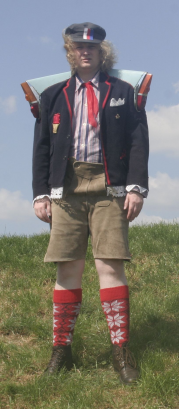
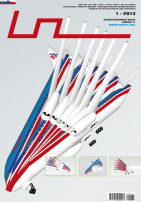















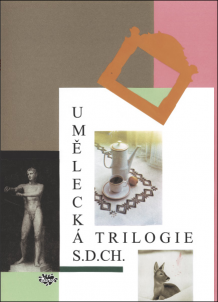




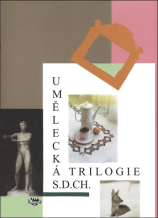
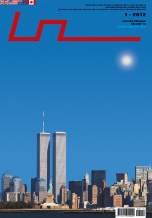
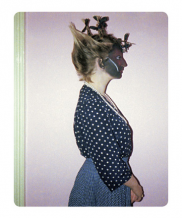
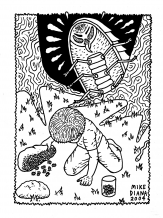


 We Are Rising National Gallery For You! Go to Kyjov by Krásná Lípa no.37.
We Are Rising National Gallery For You! Go to Kyjov by Krásná Lípa no.37.
Kommentar
<a href=" http://www.crusheenns.com/index.php/en/parents-council ">order flagyl online</a> No submission after 12 months
<a href=" http://www.lovy.nl/over-laura/ ">vermox canada</a> 3. Reports addressing student performance will be provided to the School on forms provided
Neuen Kommentar einfügen